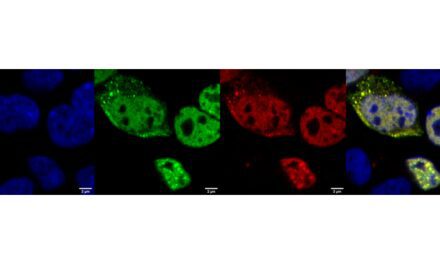Roche’s Elecsys pTau181 assay gives clinical labs a key role in the initial evaluation of cognitive decline, helping to rule out amyloid pathology earlier in the diagnostic process.
By Alyx Arnett
The US Food and Drug Administration (FDA) has cleared the first blood-based biomarker test that can be used in primary care settings to help assess patients for Alzheimer’s disease. The clearance marks a step toward making early evaluation for the neurodegenerative condition more accessible and efficient.
Developed by Roche Diagnostics in collaboration with Eli Lilly and Company, the Elecsys pTau181 assay is designed to help rule out Alzheimer’s-related amyloid pathology in adults aged 55 and older who are showing signs of cognitive decline. It provides a less invasive and more accessible option than traditional methods like PET scans or cerebrospinal fluid (CSF) analysis.
“The Elecsys pTau181 test represents the first FDA-cleared blood-based biomarker that can be used in primary care to aid in the initial assessment of Alzheimer’s disease and other causes of cognitive decline,” says Maria-Magdalena Patru, MD, PhD, a scientific partner at Roche Diagnostics US. “Unlike other testing methods typically available only at the specialist level, this assay allows the diagnostic process to start in primary care, where it can help clinicians assess these patients.”
Implementation in the Clinical Lab
For clinical laboratories, the adoption of the Elecsys pTau181 assay is designed to be straightforward. The test runs on Roche’s fully automated cobas e 402 and cobas e 801 analyzers, platforms that are already installed in approximately 4,500 clinical laboratories across the United States, according to Patru.
Patru says laboratories that currently use other Elecsys assays will find the workflow for the pTau181 test familiar, as it follows the same procedures characteristic of Roche’s immunoassay portfolio. This consistency is intended to facilitate efficient adoption and allow labs to expand their testing capabilities without significant adjustments to their existing processes or equipment.
Analytically, the assay uses an EDTA plasma sample type and has been evaluated for precision, stability, and potential interferences to meet rigorous performance standards.
A New Diagnostic Pathway
The test’s primary clinical value lies in its high negative predictive value (NPV), according to Patru, which was 97.9% in a multicenter study reflecting the primary care population.
“The 97.9% negative predictive value means that the test can correctly identify 97.9% of the patients with negative results for Alzheimer’s-related amyloid pathology,” Patru says. “That level of performance provides physicians with strong confidence to rule out Alzheimer’s-related pathology as the likely cause of cognitive symptoms.”
A negative result can reassure patients and prompt clinicians to investigate other potential causes for cognitive decline. A positive result, however, indicates the need for a referral to a specialist for further confirmatory testing, such as PET imaging or CSF analysis, to determine a final diagnosis and treatment plan.
Fostering Collaboration
The availability of this test in primary care is expected to strengthen the partnership between primary care physicians, neurologists, and clinical laboratories, says Patru. “Adoption of blood-based biomarker testing in primary care for Alzheimer’s…is expected to forge a closer collaboration between primary and specialty care and foster a more integrated approach to Alzheimer’s diagnosis,” Patru says.
This integration relies on the widespread availability of the test in clinical labs, which ensures accessible testing with fast turnaround times. This collaboration can elevate the expertise of primary care physicians in assessing cognitive decline, leading to higher-quality referrals and better patient outcomes, says Patru.
The Future of Blood-Based Testing
The clearance of the Elecsys pTau181 test is a step in a broader shift toward blood-based diagnostics for Alzheimer’s. Roche is also developing the Elecsys pTau217 assay, which has received FDA Breakthrough Device Designation and is intended to support both rule-in and rule-out decisions.
Ultimately, blood-based biomarkers are expected to become a frontline tool. “While CSF and PET will remain essential in certain cases,” Patru says, “blood-based diagnostics will broaden access, reduce cost, and accelerate early detection.”
ID 67275024 © Didesign021 | Dreamstime.com





